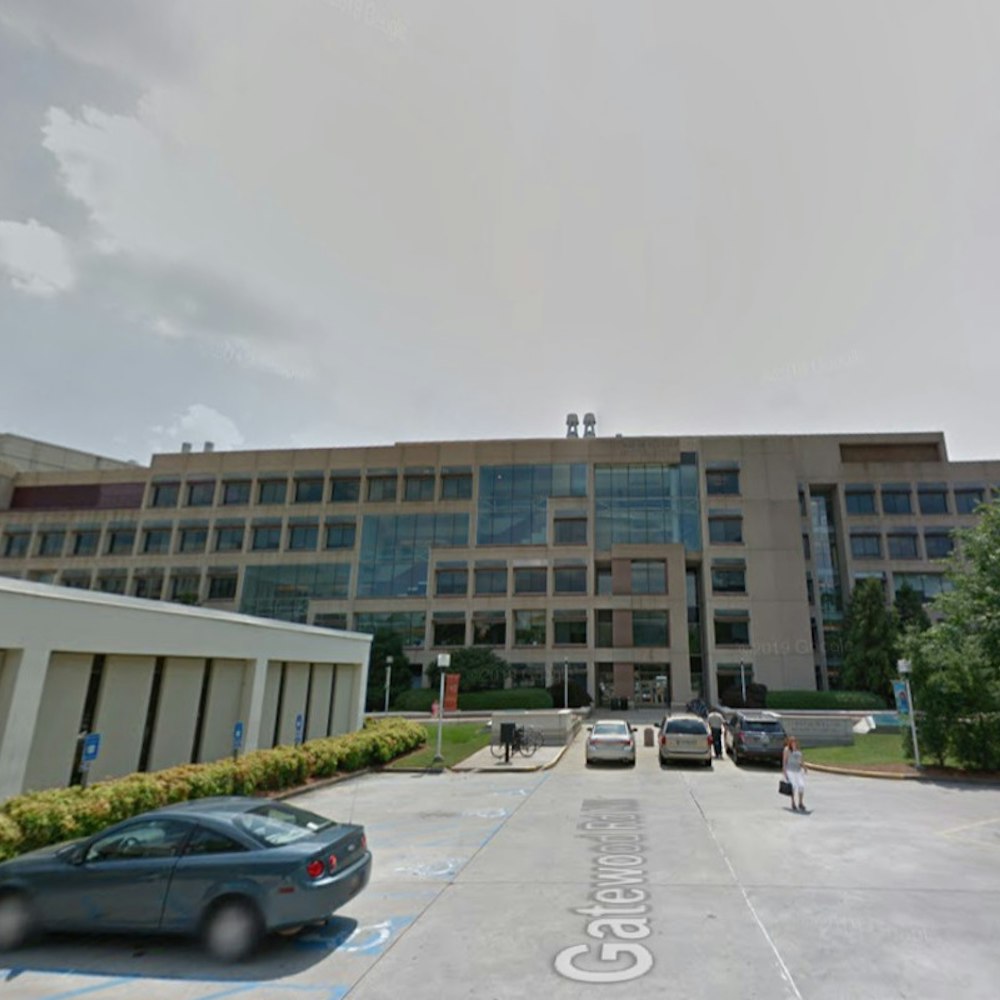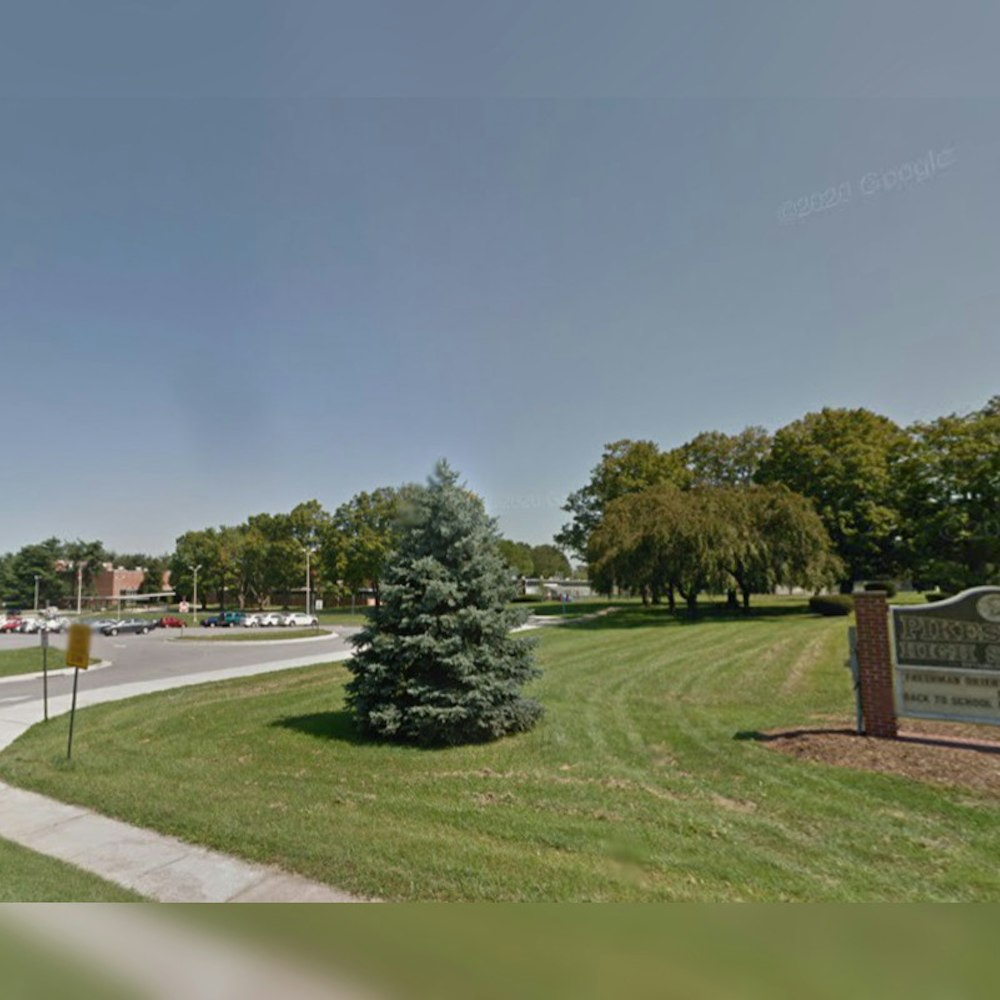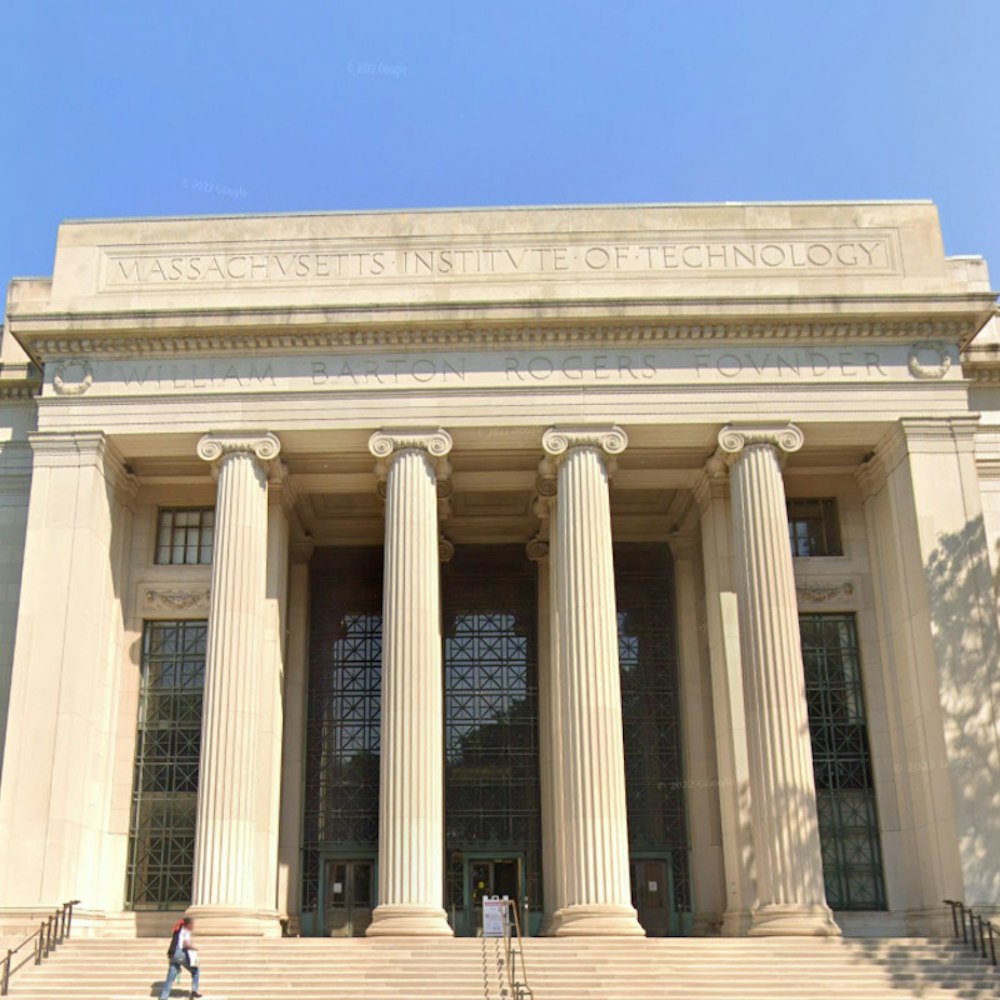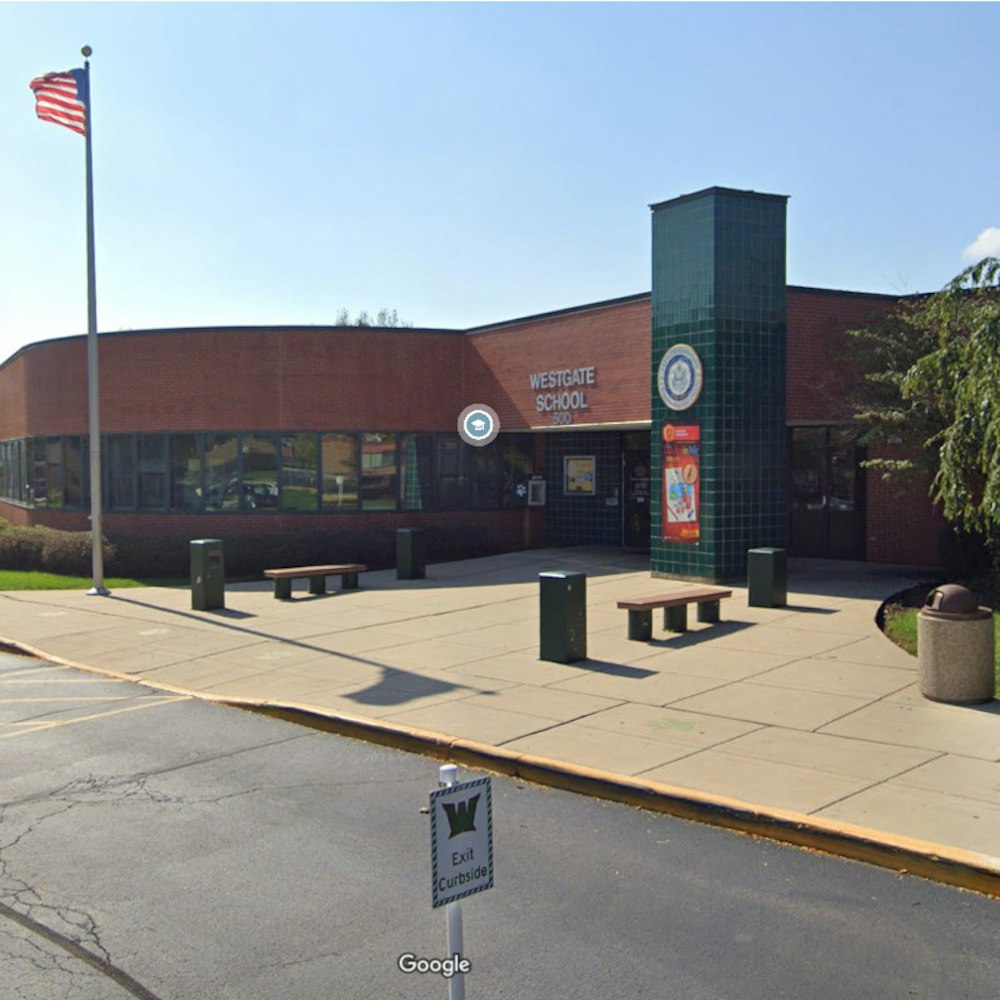
The Upper Haight has long been known as a global destination for hippies and the tourists who love them. But did you know that the neighborhood has also become a hotspot for urban streetwear retailers in the last few years?
Divisadero, meanwhile, has seen an influx of new restaurants recently. But did you know it’s still a big hub for local service businesses, including a collection of decades-old car repair shops?
These are some of the more surprising findings from an analysis we’ve done comparing storefront businesses of the two main streets. Our goal is to uncover longer-term trends that may be hard to see in the normal flow of daily news. Look for us to analyze more neighborhoods and topics in the future (and let us know in the comments if you have questions for us to look into).

For this story, we analyzed open business location data recorded by the city for addresses on Haight from Stanyan to Central, and on Divisadero from Haight to Golden Gate. Here’s what we found.
The two main streets are both neighborhood centers – if you live near one, you’ll be able to eat, drink, shop, and run errands along it without having to walk to another neighborhood. But the data shows some big differences between the two.
Haight Street: Apparel Old And New
For example, apparel makes up a whopping 40 percent of Haight’s storefronts, compared with just three percent on Divisadero. Meanwhile, the latter is much more heavily saturated with restaurants and cafes, and it fully triples Haight’s percentage of service businesses.
Since when did Haight Street become a destination for fashion? Pretty recently, it turns out — especially for skate/streetwear fashion. Sure, with six hippie-themed tourist and tie-dye spots, seven Tibetan import stores, and eight smoke shops, Haight Street will still remind you of its '60s-era heritage every quarter block or so. But other types of apparel stores have emerged in the last few decades.
We’ve counted twelve vintage and thrift stores, including Static, Held Over and Wasteland. They may be vaguely inspired by the '60s, but they appeal to a discerning type of fashion shopper who is likely arriving by bicycle or Muni, rather than by tour bus. (By the way, we’re doing a longer interview series with the Haight vintage stores, if you want to go deeper on the topic).
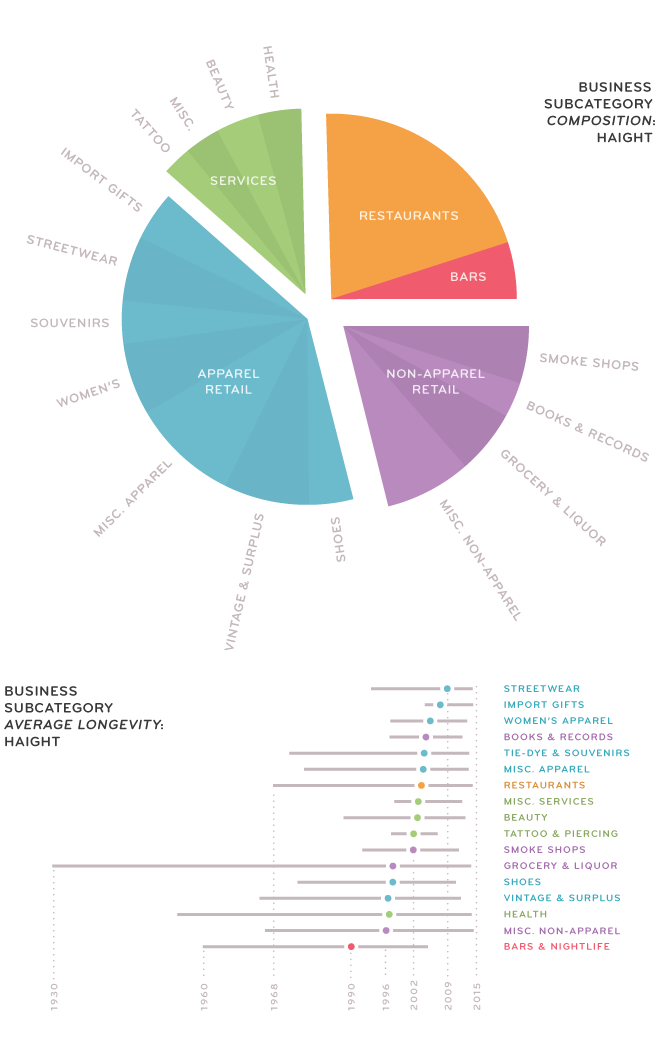
Larger operations like Goodwill, Buffalo Exchange and American Apparel have added to this post-hippie mix, as have a collection of women’s clothing and shoe stores. Together, they’ve helped set the stage for the newest type of counterculture fashion on Haight: urban streetwear.
To show this retail evolution in more detail, we’ve plotted store age range by subcategory via the gray lines above, with the dot in each representing the average opening date of the stores within. Streetwear is, like the customers it attracts, the youngest subcategory by far – there are nine stores with a mean age of five and a half years, and the median age is just one year. Only time will tell if the aging Haight tourists of the future arrive to visit stores like FTC Skateboards, Diamond Supply Co and True. For now, we can just say that it is definitely a "thing."
How does the Haight apparel scene fit in with the rest of the historic neighborhood? By squeezing into the cracks where older businesses aren't. The Ashbury-to-Clayton block is a concentrated stronghold for many of the neighborhood’s oldest businesses, as you can see in the chart below.
 You can see the traces of the Haight pre-'60s in at least one of them. The liquor store Liquid Experience has been in continual operation (under various names) since 1930, back when the neighborhood was a less popular, Depression-era drag. In fact, bars and clubs have changed the least of any category. Out of eight establishments, five of the Haight’s bars opened in their current locations before 1995.
You can see the traces of the Haight pre-'60s in at least one of them. The liquor store Liquid Experience has been in continual operation (under various names) since 1930, back when the neighborhood was a less popular, Depression-era drag. In fact, bars and clubs have changed the least of any category. Out of eight establishments, five of the Haight’s bars opened in their current locations before 1995. Divisadero Street: Cars And Services
The opposite is true on Divisadero. It has been a popular Western Addition commercial corridor for many decades, and in recent years it has also become known for its varied dining options. But there are still, despite all the gentrification, many older businesses operating.
If you take a stroll between Golden Gate and Haight, you’ll even find a collection of car repair shops and gas stations dating back to before the Summer of Love.
Some of these old facilities, like the former Alouis Auto Radiator shop, may be getting turned into condos soon, but others are staying put. As a group, the car shops are the oldest subcategory we’ve measured so far, with a mean age of 35 years. And turnover appears to be rare, with the most recent new business being a Union 76 gas station that opened eight years ago. Alouis’ departure is too recent to appear in this data set, but even that 62-year-old business is staying nearby, with its new location in another old car repair facility over on McAllister.
Compared to Haight, Divisadero’s storefront landscape is less dense, but has far more to offer in the way of services. Between barbers, stylists and nail salons, Divisadero has thirteen beauty-related shops with ages ranging from brand new all the way to 27 years. (The only notable service cluster on Haight: four well-reviewed tattoo parlors).
Likewise, this corridor has a large showing of laundry and drycleaning services, another of Divisadero’s older categories. The oldest, Ng’s Cleaners, opened over 36 years ago, and a new one hasn’t arrived on the scene since 2010.
Divisadero’s history as part of Western Addition is particularly complex. The older service businesses cater to the historic African-American community, which has been leaving the city in recent decades.
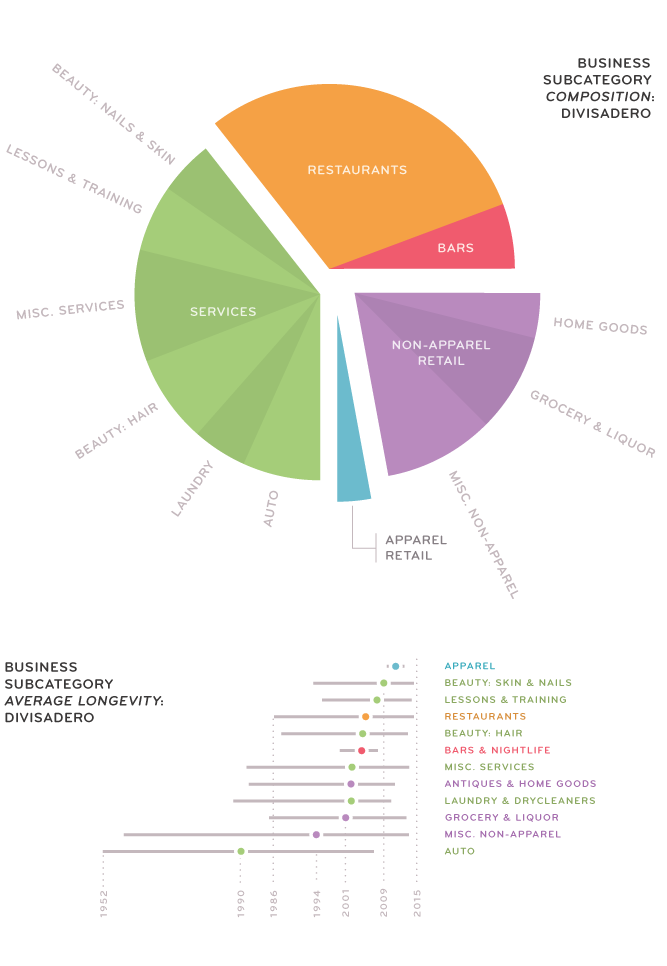
The Restaurant Mix

What we found on Haight is that there have been a similar number of cheaper and more expensive spots opening up through the years.
The halos around the data points show quite a bit of orange, indicating the coexistence of a diversity of price points. The box plot below the scatter shows that the mean ages of one- and two-dollar-sign restaurants are fairly similar— 11.9 and 9.4 years, respectively (and the 11.9 figure is partially inflated by McDonald’s 46-year-and-counting reign over Haight and Stanyan).
What we found on Divisadero was very different.
There has been a clear transition from exclusively one-dollar-sign restaurants to almost exclusively pricier places. It appears to have begun slowly about a decade ago, and has built to a cresting wave that touches every block on the corridor. The box plots for the one- and two-dollar-sign averages reveal that there isn’t a single pricier restaurant that’s older even than the average age of the less expensive spots. With a decade’s difference between these averages, the numbers show a meaningful shift in the character and makeup of this neighborhood.
All in all, one gets the sense that Haight Street is continuing to evolve in some unexpected directions, without fundamentally changing from its counterculture past, and apparel focus. Divisadero appears to be in the middle of a sharper shift from its black, working-class past. There still may be a lot of service businesses on the street, but the people operating them and visiting them are changing – and more car repair shops could end up as condos.
We'll be doing more analysis of our neighborhoods in the coming months, and using this research to inform our daily coverage. Please let us know in comments if you have ideas.
Chapman Shoop contributed to this article.


